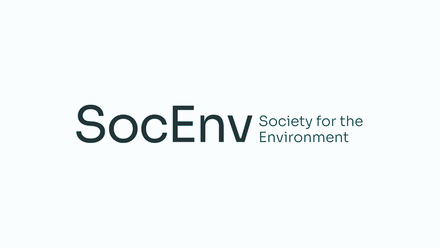Closing the gap
‘Regulatory Tools for Gender Equality in Mining’ were in the spotlight at a joint webinar hosted by the Intergovernmental Forum and the Responsible Mining Foundation. Andrea Gaini reports.

The 2020 Responsible Mining Index (RMI), released by the Responsible Mining Foundation (RMF), reveals disparities in how gender equality is addressed by mining companies and mining-affected communities.
The report assesses the economic, environmental, social and governance policies and practices of 38 large-scale mining companies that operate in more than 780 mine sites and, together, account for 28% of the world’s mining activity by value of production. The report also assesses 180 individual mine sites in 45 countries against 10 basic indicators of responsible mining.
The document notes that most companies are taking action to track and report the percentage of women at board and senior management levels. However, it finds less evidence of companies addressing issues like the provision of gender-appropriate personal protective equipment (PPE). Only six of the 38 companies analysed provide PPE that is considered effective, safe and ergonomic.
A notable outlier are South Africa-based firms, where a 2013 revision of the Mine Health and Safety Act specified that protective equipment needs to be suitable.
Jennifer Rietbergen-McCracken, a Senior Advisor at the RMF in Switzerland, discussed the issue of PPE during the recent Intergovernmental Forum-RMF webinar on ‘Regulatory Tools for Gender Equality in Mining’. She described, ‘A few years later, the country’s Mine and Health Safety Council issued detailed guidelines of the interpretation of this legal provision, [outlining] how companies can ensure that the PPE they provide to women workers is fit for purpose and safe for use.
‘At around the same time, the Department of Mineral Resources also published guidelines on the preparation of a mandatory code of practice for PPE for women workers, similarly outlining how companies can collaborate with women workers to assess the risks of wearing PPE that is inappropriate, and to actually recommend changes to better fit our needs.’
She noted that this change in legislation has influenced most South African companies, who consequently perform better on this issue in the 2020 RMI.
Rietbergen-McCracken continued, ‘Perhaps an even more striking result is a generalised lack of action to protect women workers from sexual harassment and gender-based violence. We know that studies and surveys continue to show that these risks are still a daily reality for many women mining workers, but the problem is still vast compared to the action that has taken place on it.’
She noted further that ‘looking at gender actions at the community level, we see a very straightforward result – less than half of the companies can show that they are ensuring that their community engagement activities reach out to women as well as men. And it is clear that without such special measures, women are often excluded from the discussions and the decision-making.’
Regarding local procurement, 30 of the companies surveyed in the report are looking to develop opportunities for local businesses, but only nine have taken steps to ensure that female entrepreneurs are included.
Meeting the challenge
Marie Paz Rodríguez Mier, Gender Equity Leader at the Ministry of Mines and Energy in Colombia, revealed how the Colombian government has developed an action plan to increase female participation in the formal mining workforce, is collecting and analysing gender segregated data, and is working with a ‘gender team’ to promote gender equality in mining.
She explained that the Ministry has created guidelines so that entities can integrate a focus on gender balance into their policies, plans and projects.
For example, ‘the first one has to do with engagement of women in direct and indirect employment, decision-making positions and the value chain. [Then] we have a second pillar that has to do with culture for gender equality…the way we do business and the way organisations are developed from private enterprises, as well as our public entities.’
The Ministry has also formed a partnership with companies in the sector called Transforming Energy, as ‘they are our branches into territories’, said Mier. This initiative has helped the Ministry gather information about how women participate in the sector and the types of challenges they face.
‘We found that in the [country's] mining and energy sector…participation of women is still below the national average...at 27%, when in the national arena, it is around 39 or 40% of participation. And only 12% of the companies have a gender equality policy.’
Mier highlighted how superstition and cultural barriers are also still prominent reasons for why fewer women are working in the mines. ‘It is considered bad luck that a woman enters a coal mine, which doesn't make any sense, but it still happens.’
It is hoped that by sharing best practice between companies through this partnership, it could help propel change in those firms that are further behind in tackling these issues.
No time to lose
Another study by the Natural Resources Governance Institute and the World Resources Institute, published this year, examines extractive sector laws and policies that refer to gender or women within a sample of 12 countries – Argentina, Canada, Colombia, Ghana, Indonesia, Kenya, Mongolia, Morocco, Nigeria, Peru, Sierra Leone and Tunisia.
Speaking at the event, Aubrey Menard, Senior Policy Advisor Extractive Industries at Oxfam America, reported, ‘Several countries from our study have provisions in place that prohibit women from working underground, working at night or working in the extractive sector at all. In the countries that we analysed, we found laws prohibiting women from working in mines in Argentina, Morocco, Nigeria, Sierra Leone and Tunisia.
‘Because women have been so long and pervasively excluded from the mining sector, we have a constructed view of mining as men’s work, and it is difficult to imagine women performing physically demanding jobs in underground mines.’
Menard noted that while women make up 47% of the global workforce, they represent only 22% of the oil and gas workforce and only 14% of the industrial mining workforce.
She suggested that governments and mining companies need to make ambitious and bold commitments to improve on these numbers. ‘Many of the documents that we reviewed contain gender provisions that were unambitious. So, for example, [some] quota requirements only require a woman or two to be included on a single board. Even if well implemented, this sort of requirement will do little to transform gender relations in a country's extractive sector or beyond.’
She added, ‘These quotas provide for nominal women's representation on governing bodies. However, provisions often do not require that women appointed to these positions have any particular qualification or have historically represented women's interests in any demonstrable way. And so, this is a little bit tricky, because while overly rigorous requirements can be used to justify the exclusion of women from these positions, with no requirements stated, it's also possible that women may be appointed, or chosen, to fill these quotas specifically because they're likely to be compliant with dominant cultures,’ she explained.
‘Research shows that in order to effect gender transformative change, there needs to be a critical mass of women, which is defined generally at more than one-third in leadership positions. Otherwise, women are stereotyped, tokenised, they're easily overshadowed and dismissed. It is not until this critical threshold is reached, that perceptions begin to shift and fundamental change begins to occur.’
She suggested that if countries are to use quotas, they should do so in significant quantities across the entire governance structure and supply chain. And ‘documents should be ambitious about creating systemic change. For example, [they] can be designed to require transparency on benefit impact agreements, promote the collection and transparency of data on local procurement and employment, and even to build interventions to deal specifically with the gender differentiated impacts prevalent in extraction-effective communities.
‘And more than having ambitious goals for women and gender minorities participation, documents should also be bold in...changing the way decision-making occurs in extraction-effective communities to realigning economic power.
‘Reform of the extractive sector has the potential to drastically impact the lives of people in affected communities and countries and, as such…governments should carefully consider what the desired and likely impacts of the documents may be in creating ambitious gender transformative change’.
Balancing act
The 2020 Responsible Mining Index report outlines six steps for companies to achieve gender equality:
- Develop a company-wide gender equality policy.
- Review existing policies, procedures and systems to check for any unintended gender bias and to ensure that gender equality issues are adequately addressed.
- Establish a zero-tolerance policy for harassment and gender-based violence.
- Ensure gender-appropriate personal protective equipment and health and sanitation facilities.
- Establish systems to ensure operations conduct regular gender impact assessments and act on the results of these assessments.
- Track and report gender-disaggregated data on recruitment, retention and representation in the workforce; local employment and local procurement; health and safety of workers and local communities; and workers’ wages.
Source: Responsible Mining Index







